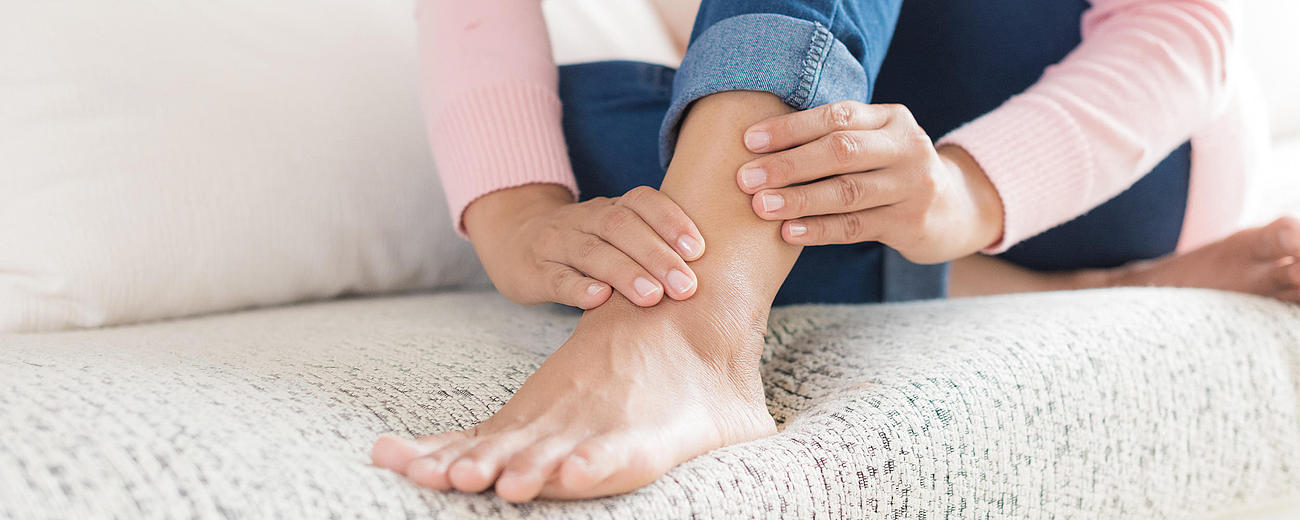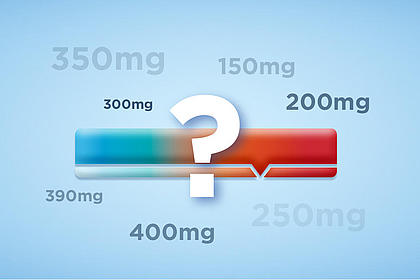Erste Hilfe bei einem Krampf im Fuß

Unsere Füße nehmen im wahrsten Sinne des Wortes eine tragende Rolle in unserem Leben ein. Egal ob wir laufen oder stehen – es sind unsere Füße, die uns den nötigen Halt geben. Manchmal machen sie jedoch auch durch Schmerzen auf sich aufmerksam – zum Beispiel dann, wenn wir mal wieder einen Krampf im Fuß oder in den Zehen haben. Jeder, der gelegentlich darunter leidet, weiß, wie höllisch diese weh tun können. Deshalb verraten wir einige Tipps, die Sie bei Fußkrämpfen beachten sollten.
Häufige Krämpfe im Fuß können auf einen Magnesiummangel hindeuten
Fuß- oder Zehenkrämpfe braucht kein Mensch – darüber sind wir uns sicher alle einig. Aber es gibt sie nun mal, weshalb es sinnvoll ist, sich mit den Ursachen auseinanderzusetzen.
Bei einem Krampf handelt es sich um eine unwillkürliche und schmerzhafte Anspannung der Muskeln. Häufig sind die Waden betroffen, aber auch kleinere Muskelgruppen oder einzelne Zehen können sich plötzlich zusammenziehen. Ursache eines Krampfes im Fuß ist häufig eine Überbelastung oder das Tragen von sehr engen oder unbequemen Schuhen.
Die An- und Entspannung der Muskeln wird durch eine perfekte Balance von Calcium und Magnesium reguliert. Gerät diese beispielsweise durch einen Magnesiummangel aus dem Gleichgewicht, sind unangenehme Fuß- und Zehenkämpfe eine mögliche Folge. Deshalb ist es wichtig, stets auf seinen Magnesiumspeicher zu achten.
Treten Krämpfe im Fuß sehr häufig auf, ist es ratsam, einen Arzt aufzusuchen. Er kann nicht nur den Elektrolythaushalt überprüfen, sondern auch weitere Ursachen, zum Beispiel primäre Erkrankungen der Nerven oder Muskeln, ausschließen.
Zehen- und Fußkrämpfen vorbeugen
Gerade wer häufig einen Krampf im Fuß oder in der Wade hat, sollte auf eine ausreichende Magnesiumversorgung achten. Die Deutsche Gesellschaft für Ernährung empfiehlt für Frauen ab 19 Jahren beispielsweise 300 mg und für Männer 350 mg täglich.1 In einigen Situationen, zum Beispiel bei Stress und Sport, kann der Bedarf erhöht sein. Gerade dann kann es sinnvoll sein, die tägliche Zufuhr mit Biolectra® Magnesium zu unterstützen.
Durch regelmäßige Bewegung lassen sich Fußkrämpfe und Wadenkrämpfe vorbeugen. Wer beispielsweise den ganzen Tag im Büro sitzt, kann seine Muskulatur durch Wippen der Füße oder Bewegen der Zehen aktivieren. Aber auch regelmäßiger Sport tut den Muskeln gut. Dabei ist jedoch auf festes Schuhwerk zu achten. Außerdem sollten Sie sich vor dem Training gut aufwärmen, um einen Krampf in den Zehen zu vermeiden.
Tipps für den Akutfall: Das können Sie bei einem Krampf im Fuß tun
Aber was hilft, wenn der Krampf im Fuß urplötzlich da ist? Zur Linderung der Schmerzen sind folgende Tipps hilfreich:
- Dehnen: Greifen Sie (am besten in Sitzposition) nach Ihren Zehen und ziehen Sie sie langsam, aber mit Kraft an den Körper heran. Dabei drücken Sie die Ferse nach vorne. Diese Position sollten Sie so lange halten, bis die Schmerzen nachlassen.
- Massieren: Ziehen Sie Socken und Schuhe aus und massieren Sie sanft die verhärteten Stellen.
- Bewegung: Sobald Sie sich dazu in der Lage fühlen, sollten Sie vorsichtig versuchen, ein paar Schritte zu gehen. Dadurch lockern Sie die Muskulatur und verhindern, dass der Krampf im Fuß gleich wiederkehrt.
Zudem kann auch Wärme eine entspannende und schmerzlindernde Wirkung haben. Hierfür eignet sich zum Beispiel eine Wärmflasche im Bett oder ein warmes Fußbad.


